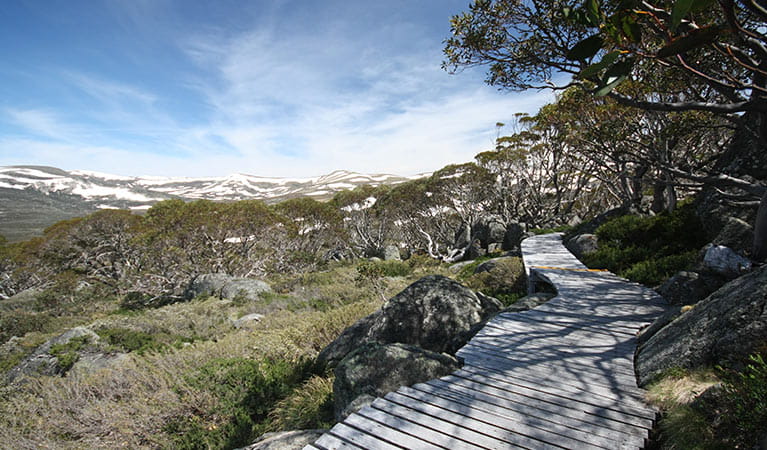Snow Gums boardwalk
Thredbo-Perisher area in Kosciuszko National Park
Overview
Snow Gums boardwalk is an easy walk from Charlotte Pass lookout to Main Range lookout, offering awe-inspiring views of Australia's highest peaks in alpine Kosciuszko.
- Accessibility
- Hard
- Distance
- 0.4km return
- Time suggested
- 15 - 30min
- Grade
- Grade 3
- Trip Intention Form
-
It's a good idea to let someone know where you're going. Fill in a trip intention form to send important details about your trip to your emergency contact.
- Personal Locator Beacon
-
If you're planning to loan a Personal Locator Beacon (PLB) from one of these locations, wait and fill out your trip intention form in person.
- Entry fees
- Park entry fees apply
- Opening times
Snow Gums boardwalk is open from the October to June long weekends. This walk is inaccessible in winter when it's snowbound.
- What to
bring - Drinking water, hat, sunscreen, suitable clothing
Snow Gums boardwalk has one of the greatest – and most easily accessible – views in Kosciuszko National Park. Do you want to see Mount Kosciuszko and some of the country’s other high peaks? They’re right there in front of you. It’s like you’re in a grandstand.
The boardwalk starts at the Charlotte Pass turning circle and follows the tree line that separates the sub-alpine from the expansive alpine landscape. The snow gums you’ll see here – some of them hundreds of years old – are dramatically twisted and stunted due to the blasting effects of wind, snow and ice. In spring, you’ll see wildflowers such as yellow billy buttons, anemone buttercups and paper daises, blooming at ground level. There’ll also likely be snowdrifts higher up, where there are no trees.
The winding boardwalk and lookout platforms are suitable for everyone, and informative signage along the way is a great introduction to the area's unique landscapes, plants and animals. Around 200m from Charlotte Pass lookout, steps lead up to a scenic viewing platform, a few more steps and you'll reach Main Range lookout, which spoils you with sweeping views across the magnificent Snowy Mountains. See if you can spot Mount Kosciuszko summit trail heading up to Rawson Pass, or Main Range walk as it crosses the Snowy River.
Take a virtual tour of Snow Gums boardwalk captured with Google Street View Trekker.
On the way
-

Charlotte Pass lookout
Charlotte Pass lookout offers easily accessed vistas of Australia’s highest mountains, in the Thredbo-Perisher area of Kosciuszko National Park. Enjoy the views before walking to Mount Kosciuszko’s summit.
Map
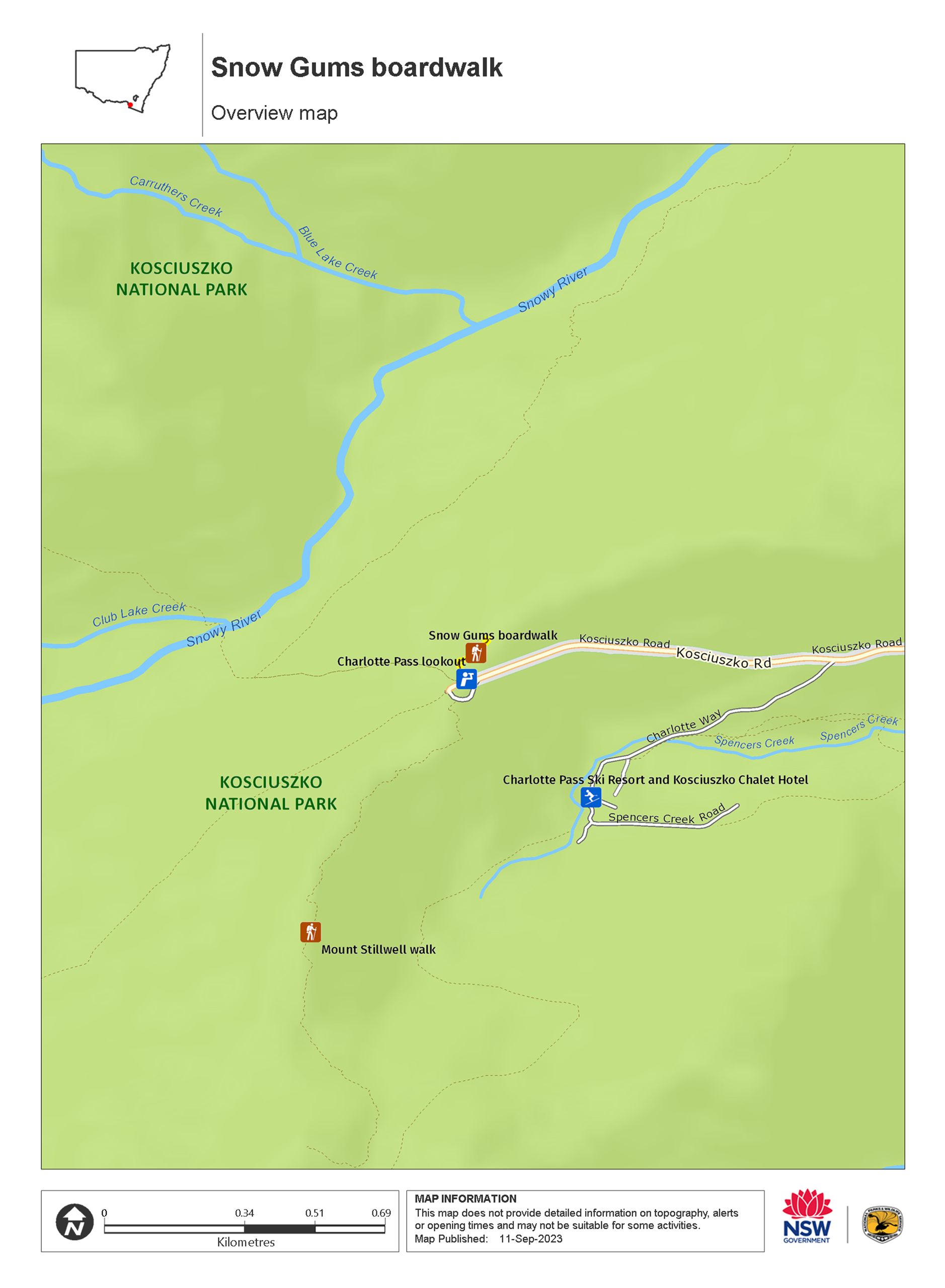
Map legend

Map
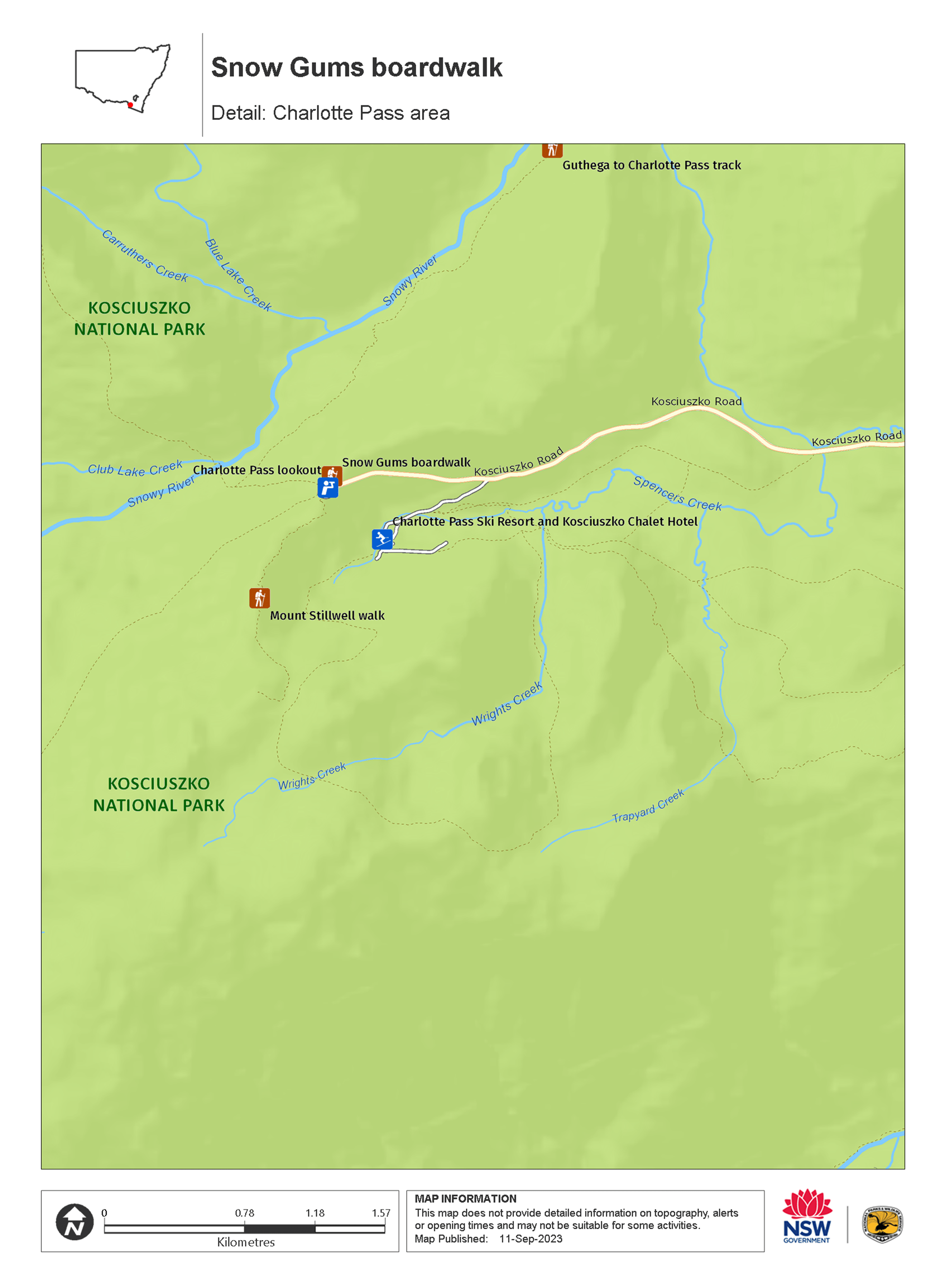
Local alerts
For the latest updates on fires, closures and other alerts in this area, see https://www.nationalparks.nsw.gov.au/things-to-do/walking-tracks/snow-gums-boardwalk/local-alerts
General enquiries
- National Parks Contact Centre
- 7am to 7pm daily
- 1300 072 757 (13000 PARKS) for the cost of a local call within Australia excluding mobiles
- parks.info@environment.nsw.gov.au
Park info
- in the Thredbo-Perisher area of Kosciuszko National Park in the Snowy Mountains region
- The Thredbo-Perisher area is open all year, but some roads and trails may close due to weather conditions or park management issues. Kosciuszko Road is closed between Perisher and Charlotte Pass in winter (June to October long weekends).
-
Park entry fees apply on Alpine Way and Kosciuszko Road
Winter (June to October long weekends): $29 per vehicle per day (24hrs from purchase); motorcycles $12; bus passengers $11.45 per adult, $3.60 per child per day. Find out more about the winter entry surcharge.
Rest of Year: $17 per vehicle per day (24hrs); motorcycles $7; bus passengers $6.60 per adult, $2.20 per child per day.
Passes: Day passes, multi-day passes and annual All Parks Pass available from NPWS visitor centres, local agents and operating vehicle entry stations. Single and Multi-Day passes are also available via the Park'nPay app. Short Breaks Pass: $68 for 5 days park entry at price of 4 days (not valid winter).
Read our Annual Pass FAQs for information.
Buy annual pass.
Visitor info
All the practical information you need to know about Snow Gums boardwalk.
Track grading
Features of this track
Distance
0.4km return
Time
15 - 30min
Quality of markings
Clearly sign posted
Experience required
No experience required
Gradient
Gentle hills: Snow Gums boardwalk is mostly flat with gentle climbs.
Quality of path
Formed track: There's a stone flagging ramp at the start of the walk that leads to a lookout platform. The lookout platform and the walk beyond is wood boardwalk.
Towards the end of the walk, there are 4 long steel staircases.
Steps
Many steps: There are occasional steps at the start of the walk that are spaced out in small lots of between 2 to 4 steps at a time.
Around two-thirds of the way along the track, there are 4 sets of steep steel staircases with 8 to 16 steps each. All 4 staircases have a handrail.
Other barriers
Other barriers: The wood boardwalk can be slippery when wet or icy. There are no handrails along most of the boardwalk.
Accessible options
The first 150m of the walk may be accessible for people with reduced mobility:
- This section of the walk goes from the turning circle at Charlotte Pass to roughly two-thirds of the way along the track
- It has occasional steps that are spread out and in small lots of 2 to 4 steps at a time
- There's one set of 3 steps where people with reduced mobility may need assistance.
Getting there and parking
Snow Gums boardwalk is in the Alpine precinct of Kosciuszko National Park. To get there:
- Drive along Kosciuszko Road from Jindabyne.
- Go past the ski resorts of Smiggin Holes, Perisher Valley and Charlotte Pass Village to Charlotte Pass.
Road quality
All 2WD vehicles need to carry snow chains in winter, between June and October long weekends, on:
- Kosciuszko Road (to Perisher)
- Guthega Road
- Alpine Way between Thredbo and Tom Groggin
Snow chains are recommended for all vehicles driving in the park, including 4WD and AWD, in the event of extreme weather. Read our snow driving in Kosciuszko tips.
Parking
Parking is available on bitumen Kosciuszko Road a short walk from the start of Snow Gums boardwalk.
There are 2 accessible parking spots and bus parking is also available.
Facilities
Toilets
There's an accessible toilet at the south-west end of the Charlotte Pass turning circle.
Maps and downloads
Accessibility
Disability access level - hard
The first 150m of this walk may be accessible for people with reduced mobility. After this point, the walk has 4 steep, steel staircases with between 8 to 16 steps each.
The accessible section of the walk:
- Starts from the turning circle at Charlotte Pass and spans roughly two-thirds of the way along the track.
- Has occasional steps that are spread out and in small lots of 2 to 4 steps at a time
- In this section of the walk, there's one set of 3 steps where people with reduced mobility may need assistance.
There's an accessible toilet at the start of the walk, at the south-west end of the Charlotte Pass turning circle. There are 2 accessible parking spaces on Kosciuszko Road where this walk begins.
Prohibited
Drones
Flying a drone for recreational purposes is prohibited in this area. Drones may affect public enjoyment, safety and privacy, interfere with park operations, or pose a threat to wildlife. See the Drones in Parks policy.
This area may be a declared Drone Exclusion Zone, or may be subject to Civil Aviation Safety Authority (CASA) rules for flying near airports, aerodromes and helicopter landing sites. See CASA's Drone Flyer Rules.
Commercial filming and photography
Commercial filming or photography is prohibited without prior consent. You must apply for permission and contact the local office.
Pets
Pets and domestic animals (other than certified assistance animals) are not permitted. Find out which regional parks allow dog walking and see the pets in parks policy for more information.
Smoking
NSW national parks are no smoking areas.
Visitor centre
-
Snowy Region Visitor Centre
49 Kosciuszko Road, Jindabyne NSW 2627 - 8.30am to 5pm daily. Closed Christmas Day.
- 02 6450 5600
Learn more
Snow Gums boardwalk is in Thredbo-Perisher area. Here are just some of the reasons why this park is special:
Explore the rooftop of Australia
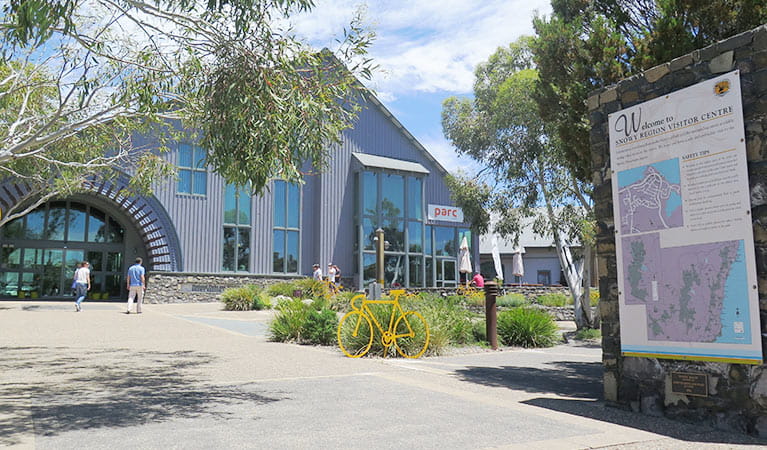
Skiers and snowboarders will be familiar with the fabulous snow sport facilities at Thredbo, Perisher and Charlotte Pass, but there are endless activities year-round. This area is a mecca for walkers and riders. Take in the spectacular 3600 views from Snow Gums boardwalk or Dead Horse Gap walk. A hike to Mount Kosciuszko is a must, while the awe-inspiring Main Range loop explores glacial lakes and the dramatic Western Fall. Take to 2 wheels on Thredbo Valley track, or get an adrenaline charge on the famous Cannonball Run. If you need some inspiration, stop by the Snowy Region Visitor Centre for tips on top experiences, guided tours, and where to stay. Kids can also learn more on a school excursion to the Kosciuszko Education Centre.
- Cross-country skiing activities in Perisher Feel the thrill of carving fresh tracks on the cross-country trails with Perisher X-Country. It’s a beautiful way to experience the alpine environment of Kosciuszko National Park.
- Kosciuszko laser biathlon sessions Whether it's summer or winter, give the thrilling sport of biathlon a try. With the help of instructors from NSW Biathlon, you'll learn to combine the skill of laser target shooting with skiing or roller skiing.
- Kosciuszko walk - Thredbo to Mount Kosciuszko This iconic day walk from Thredbo will have you conquering the summit of Mount Kosciuszko in a couple of hours. You'll quite literally be on a high as you soak in the epic views from Australia's highest point.
- Perisher Valley Office Perisher Valley Office, in the heart of Perisher Valley, is a handy last-minute stop for advice, maps, hiking essentials and important information before your alpine adventures in Kosciuszko National Park.
- Schlink Hut walking track Schlink Hut walking track is a high alpine hiking or mountain biking adventure near Perisher, visiting 3 historic huts in Kosciuszko National Park. Winter access is by snowshoe or cross-country skiing only.
World-class wilderness
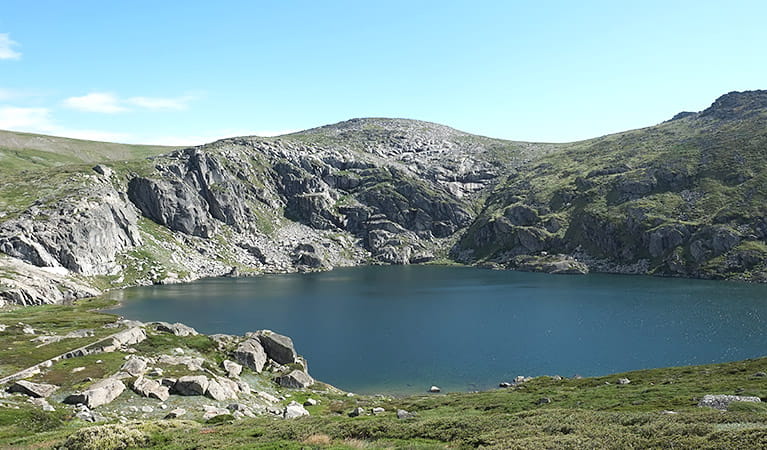
In recognition of Kosciuszko's unique value as a conservation area, it's been named a UNESCO Biosphere Reserve. More than half of the area of the park, over 350,000ha, has been declared wilderness, including the rugged Western Fall wilderness of the Main Range. It also contains Blue Lake, a rare cirque lake formed by the head of a glacier. Blue Lake is a listed Ramsar site, recognised for the role it plays in preserving rare and threatened species. The Australian Alps received National Heritage recognition in 2008, and were named one of Australia's National Landscapes.
- Schlink Hut walking track Schlink Hut walking track is a high alpine hiking or mountain biking adventure near Perisher, visiting 3 historic huts in Kosciuszko National Park. Winter access is by snowshoe or cross-country skiing only.
Alpine plants and animals
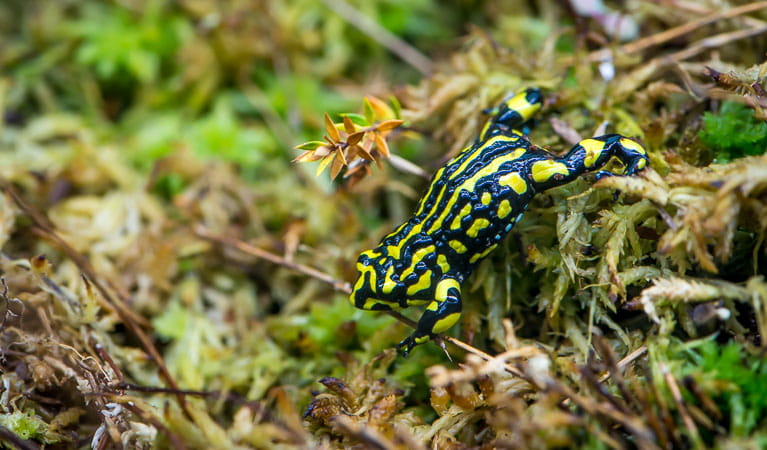
The park has over 200 species of alpine flowering plants and provides important habitat to nationally endangered species, such as southern corroboree frogs and broad-toothed rats. Ancient snow gums, twisted and stunted from the blasting effects of wind, snow and ice, mix with alpine ash and fragrant alpine mint bush. Above the treeline only heath, snow grass and the hardiest plants face the cold. Slow-growing mountain plum pine, some over 500 years-old, cling to boulders for warmth, providing shelter and food for threatened mountain pygmy-possums. Bogs of spongy sphagnum moss soak up the snow melt, to be released into alpine streams. From late spring to early summer, the heath is dotted with patches of wildflowers like alpine sunrays and snow daisies, yellow billy buttons, and the anemone buttercup, found only in Kosciuszko National Park.
- Biodiversity survey The biodiversity survey school excursion in Kosciuszko National Park for Stage 4 (Years 7-8) students focuses on Science. Investigate what 'biodiversity' means and use field equipment to assess the biodiversity of sample quadrats along a transect in the montane forest.
- Biodiversity survey The Biodiversity survey school excursion in Kosciuszko National Park for Stage 5 (Years 9-10) students focuses on science and fieldwork skills. Investigate what 'biodiversity' means and use field equipment to assess the biodiversity of sample quadrats along a transect in the montane forest.
- Charlotte Pass Village to Perisher Valley walk Charlotte Pass Village to Perisher Valley walk lets you explore the natural wonders of NSW high country. 12.9km one way and immersed in nature, it’s an ideal day walk in Thredbo-Perisher area.
- Environmental scientist Primary students learn to think like an environmental scientist in this Stage 3 Science and Technology excursion. They'll investigate living things and their habitats in Kosciuszko National Park, and then plan and do their own simple scientific investigation.
- Going up the mountain Going up the mountain is a school excursion in Kosciuszko National Park for Stage 6 (Years 11-12) students focusing on Geography. Students will use field work to record and compare the geology, weather, native plants, animals, human use and sustainability of the montane, sub-alpine and alpine ecosystems.
Unique landscapes
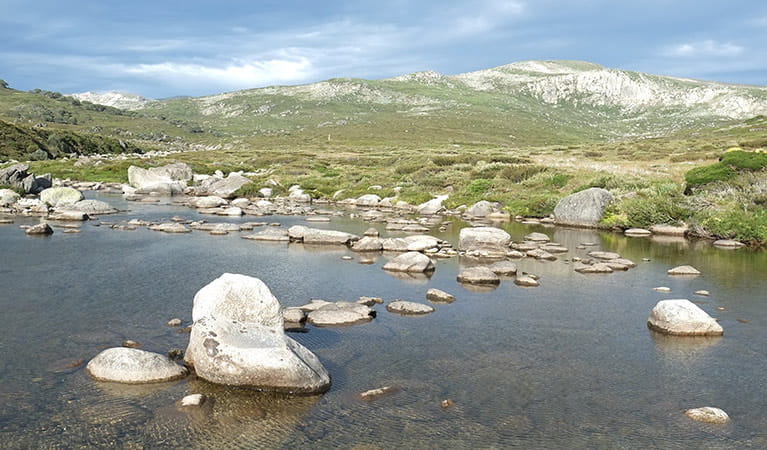
Kosciuszko National Park is a huge park containing Australia's only true alpine environment, the highest part of the Great Dividing Range, and all of NSW's ski resorts. Above the treeline of snow gums - the only trees to grow at this altitude - is a unique landscape of alpine herb fields, feldmark, bogs and tarns. A walk to the highest peak in mainland Australia, Mount Kosciuszko, is the perfect way to see this landscape. Walk from Thredbo or Charlotte Pass, and marvel at the huge granite tors and lakes carved out during Australia's last Ice Age, between 35,000 and 10,000 years ago.
- Cross-country mountain bike tours Challenge yourself on the brilliant trails of Kosciuszko National Park with K7 Adventures. From beginner to advanced level, there's a mountain bike experience waiting for you in the Snowy Mountains.
- Environmental scientist Primary students learn to think like an environmental scientist in this Stage 3 Science and Technology excursion. They'll investigate living things and their habitats in Kosciuszko National Park, and then plan and do their own simple scientific investigation.
- Going up the mountain Going up the mountain is a school excursion in Kosciuszko National Park for Stage 6 (Years 11-12) students focusing on Geography. Students will use field work to record and compare the geology, weather, native plants, animals, human use and sustainability of the montane, sub-alpine and alpine ecosystems.
- Guthega to Charlotte Pass walk Take in majestic views of Australia's highest peaks on the Guthega to Charlotte Pass walk, near Thredbo and Perisher. Follow the Snowy River and enjoy the fresh mountain air.
- Kosciuszko - a special place Kosciuszko a special place is a presentation for stage 6 (year 11-12) students focusing on Geography. This excursion highlights the unique natural and cultural features of Kosciuszko National Park, interaction of the four spheres, human impacts, sustainability and park management. Students have the opportunity to have their questions answered by an NPWS education officer.
Plants and animals protected in this park
Animals
-

Bare-nosed wombat (Vombatus ursinus)
A large, squat marsupial, the Australian bare-nosed wombat is a burrowing mammal found in coastal forests and mountain ranges across NSW and Victoria. The only other remaining species of wombat in NSW, the endangered southern hairy-nosed wombat, was considered extinct until relatively recently.
-
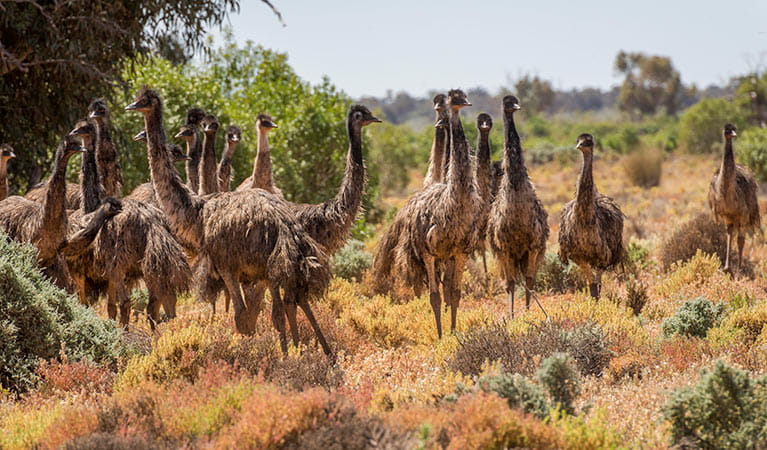
Emu (Dromaius novaehollandiae)
The largest of Australian birds, the emu stands up to 2m high and is the second largest bird in the world, after the ostrich. Emus live in pairs or family groups. The male emu incubates and rears the young, which will stay with the adult emus for up to 2 years.
-
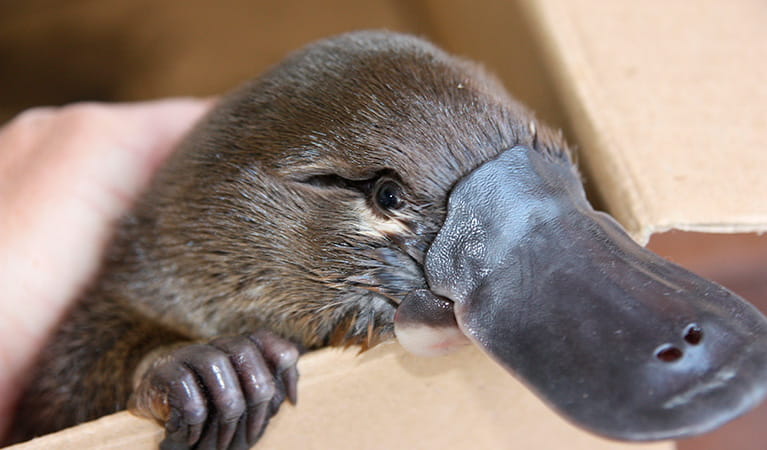
Platypus (Ornithorhynchus anatinus)
One of the most fascinating and unusual Australian animals, the duck-billed platypus, along with the echidna, are the only known monotremes, or egg-laying mammals, in existence. The platypus is generally found in permanent river systems and lakes in southern and eastern NSW and east and west of the Great Dividing Range.
-
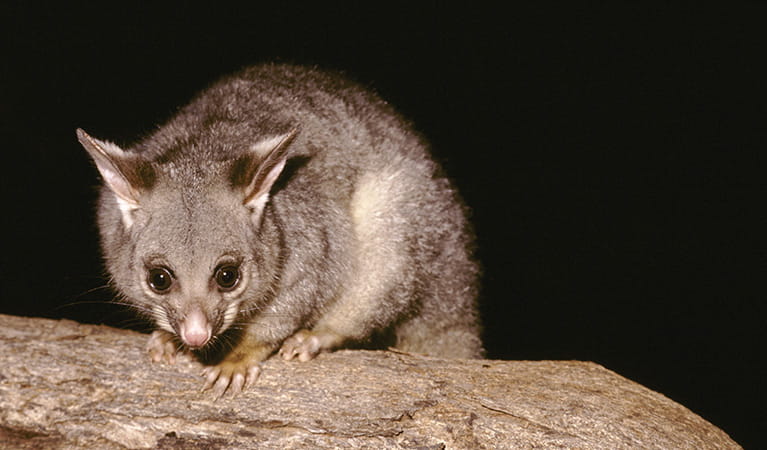
Common brushtail possum (Trichosurus vulpecula)
One of the most widespread of Australian tree-dwelling marsupials, the common brushtail possum is found across most of NSW in woodlands, rainforests and urban areas. With strong claws, a prehensile tail and opposable digits, these native Australian animals are well-adapted for life amongst the trees.
-

Common ringtail possum (Pseudocheirus peregrinus)
Commonly found in forests, woodlands and leafy gardens across eastern NSW, the Australian ringtail possum is a tree-dwelling marsupial. With a powerful tail perfectly adapted to grasp objects, it forages in trees for eucalypt leaves, flowers and fruit.
-
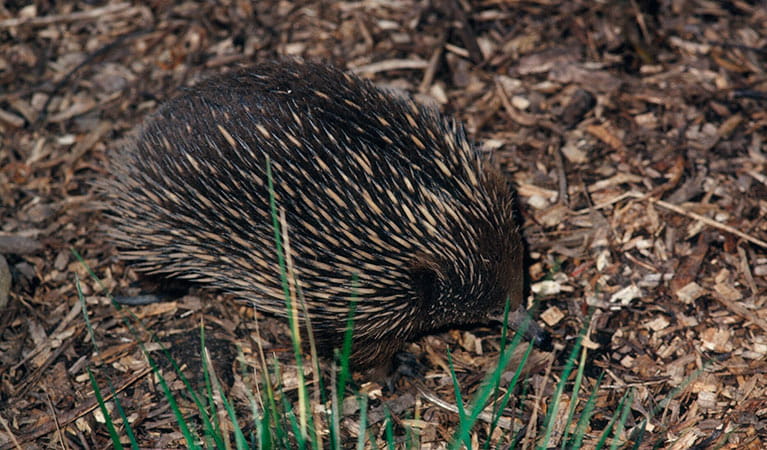
Short-beaked echidna (Tachyglossus aculeatus)
One of only 2 egg-laying mammals in the world, the short-beaked echidna is one of the most widespread of Australian native animals. Covered in spines, or quills, they’re equipped with a keen sense of smell and a tube-like snout which they use to break apart termite mounds in search of ants.
-
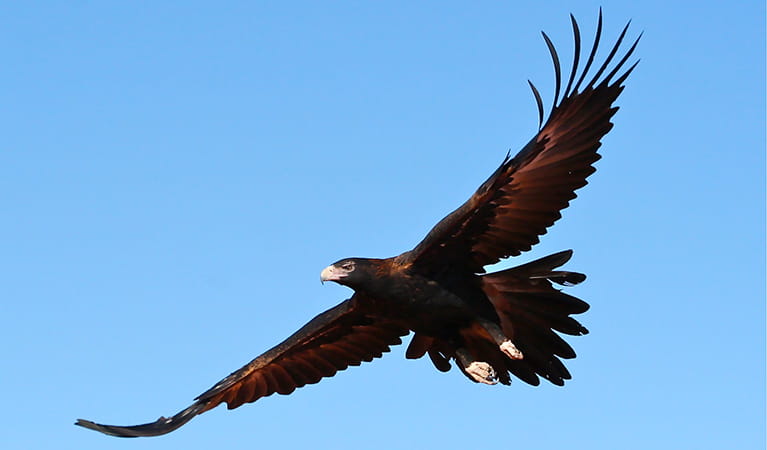
Wedge-tailed eagle (Aquila audax)
With a wingspan of up to 2.5m, the wedge-tailed eagle is Australia’s largest bird of prey. These Australian animals are found in woodlands across NSW, and have the ability to soar to heights of over 2km. If you’re bird watching, look out for the distinctive diamond-shaped tail of the eagle.
-
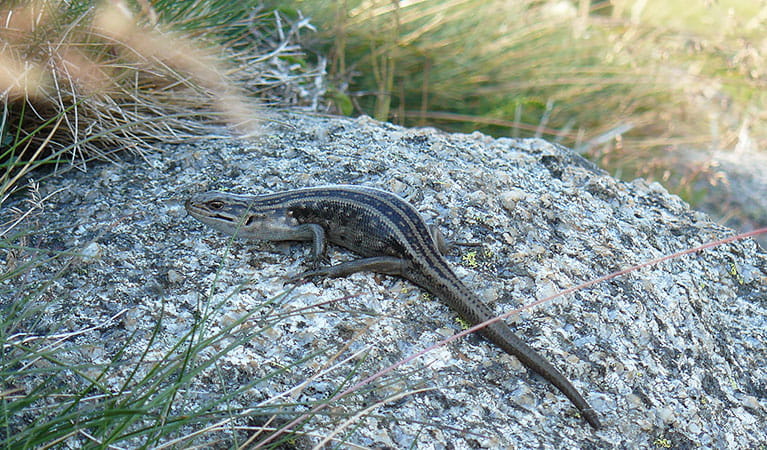
Guthega skink (Liopholis guthega)
The endangered Guthega skink is the highest recorded skink in Australia. It lives only in alpine Kosciuszko National Park, and the Victorian Alps, above 1600m.
Plants
-
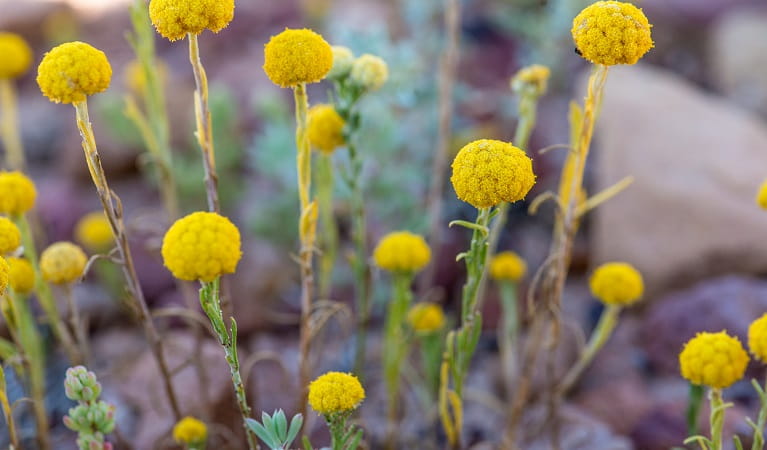
Billy buttons (Craspedia spp. )
Billy buttons are attractive Australian native plants that are widespread throughout eastern NSW in dry forest, grassland and alpine regions such as Kosciuszko National Park. The golden-yellow globe-shaped flowers are also known as woollyheads. Related to the daisy, billy buttons are an erect herb growing to a height of 50cm.
Environments in this area
School excursions (10)
- Going up the mountain, Stage 6 (Years 11-12), Geography
- Above the treeline, Stage 6 (Years 11-12), Geography
- Biodiversity survey, Stage 4 (Years 7-8), Science
- Kosciuszko - a special place, Stage 6 (Years 11-12), Geography
- Biodiversity survey, Stage 5 (Years 9-10), Science
- Kosciuszko - a special place, Stage 5 (Years 9-10), Geography
- Teddy bears' picnic, Early Stage 1 (Kindergarten), Science and Technology
- Teddy bears' picnic, Early Stage 1 (Kindergarten), HSIE
- Environmental scientist, Stage 3 (Years 5-6), Science and Technology
- Going up the mountain, Stage 4 (Years 7-8), Geography

